With the summer season coming, sowing begins and the small plants begin to need care. But how to feed our plants to make them grow healthy, luxuriant, strong and fruitful? In this guide, we will briefly explain the importance of fertilizers and the various types of nutrients our green friends need to bring us to an enviable harvest.
Index
1. How to use fertilizers and additives
2. Nutrients, stimulators, PK boosters, fertilizers
3. What is the NPK standard of fertilizers
4. When to use fertilizers to grow on the ground
5. How to dose the fertilizers for outdoor cultivation
6. Which nutrients to use in the period from vegetative to early flowering
7. How to clean the roots of plants before harvesting
8. Organic or mineral fertilizers for outdoor growing
9. How to store fertilizers
1. How to use fertilizers and additives
Soil fertilizers
Just as man needs an adequate and balanced diet, plants also need it and this must be provided in a regular and balanced way, both in quantity and quality. Fertilizers can be found in liquid or solid form.
We will explain how to use these nutrients in the best possible way in order to have a successful harvest.
2. Complete nutrients, stimulators, PK boosters, fertilizers
There are different products for cultivation and they can be classified into different categories:
- Complete nutrients that simultaneously contain NPK macroelements (nitrogen, phosphorus and potassium), secondary elements (calcium, magnesium) and all trace elements (iron, zinc, etc ...) in adequate proportions. These fertilizers are generally presented in a growth nutrient format (rich in nitrogen N), or in a flowering nutrient format, as well as those that are used for the entire growing cycle such as the Aptus All In One pellet fertilizer slow release.
Aptus All In One a lento rilascio .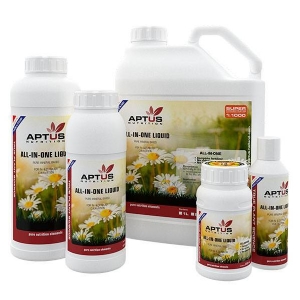
- Organic stimulators consist of vitamins, amino acids, algae or plant extracts, organic, humic, fulvic acids. These products contain little or no nutrients, but they will stimulate the plant's metabolism and improve its assimilation of nutrients. For example, a root stimulator helps root development, while a bloom stimulator promotes good bud formation. An example of a great stimulator is Kalong's Bat Guano.
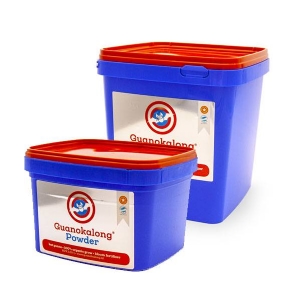
- PK boosters are used to increase the explosive growth of buds in the fattening phase (around the 5th week of flowering). These contain Phosphorus (P) and Potassium (K), the two most important elements for the flowering of the plant, in a directly assimilable mineral form. The fertilizer as a bloom enhancer, a PK does not contain nitrogen or trace elements but can be used as a complete nutrient, albeit only as a complement since it has no trace elements, for a short period of about two to three weeks during the final flowering phase. We propose to use the excellent Biotabs PK Booster in the Compost Tea version for this purpose.
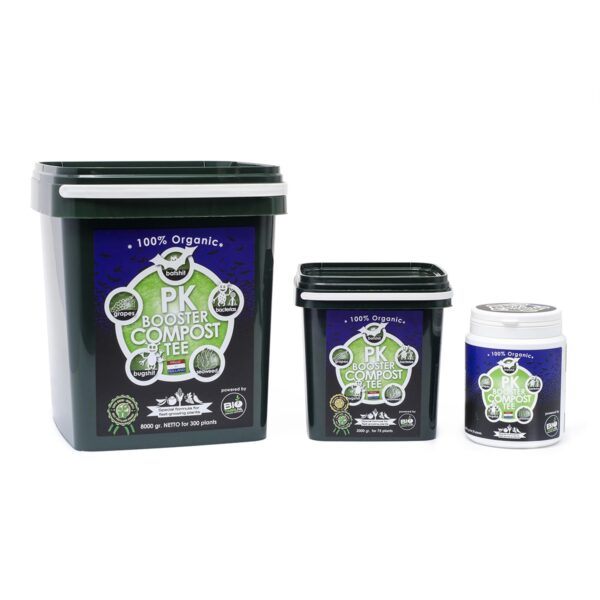
- Organic fertilizers are nutrients in a slow release solid natural form that we can mix with the soil before use (or in the form of tea): vermicompost, guano, ash, algae. The more fertilizers are used, the more enriched the soil will be and therefore the less liquid fertilizer will be added during cultivation. However, care must be taken not to enrich the substrate too much, especially for small plants (seedlings, cuttings ...) and to balance the dosages of fertilizer well. We also recommend that you do not use fresh animal manure, as it is very concentrated. Atami's Earthworm Humus is perfect for this purpose.
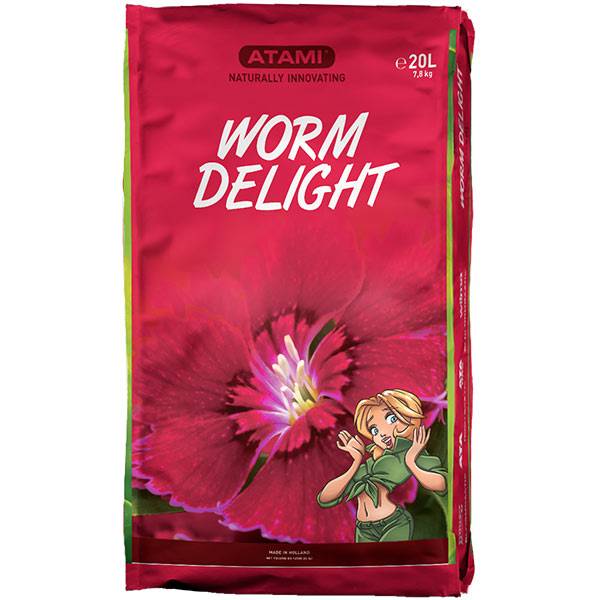
3. What is the NPK standard of fertilizers
In each bottle of fertilizer there is a standard NPK, these 3 letters are followed by 3 numbers.
These letters correspond to the 3 main and important nutrients for plants: Nitrogen (N), Phosphorus (P) and Potassium (K).
The numbers that follow correspond to the ratio of these elements to each other, for example:
• A fertilizer with 4/2/3 NPK contains more nitrogen than phosphorus and potassium, suitable for vegetative growth.
• A fertilizer with an NPK 2/3/4 contains more phosphorus and potassium than nitrogen, suitable for flowering
Mineral nutrients
It is important to understand that these numbers correspond to a ratio and not an exact percentage, the dilution of nutrients can vary depending on the brand used. You should also know that the NPK standard is not the same in all countries and changes regularly, which is why nutrient labels need to be updated regularly.
So it will be useless to choose a product with the highest standard, it is not an indication of concentration and not of effectiveness. This rule will be useful to know if a product contains NPK, and in what quantities these three nutrients are divided in order to be able to dose them according to the life stage of the plant and have a better production.
4. When to use fertilizers to grow on the ground
The use and dosage of nutrients will vary depending on the state of life the plant is in. For small plants, reduced concentrations and for large plants, higher concentrations of fertilizer.
The soil can contain a certain amount of nutrient, so you will have to wait a few weeks before adding any liquid nutrients:
• About 7-10 days after transplanting (or germination) in light soil (such as Light Mix or Soft Mix)
• Approximately 2 or 3 weeks after transplanting (or germination) in an enriched medium (such as All Mix or BioCanna)
Without the help of liquid nutrients, obtaining good crops in pots using only the soil will be impossible, so we will have to use a large amount of soil, and very enriched, so that the plant does not lack fertilizers in case of not wanting to use liquid fertilizers. to feed plants.
The nutrient is the food of the plants
Liquid nutrients (and PK boosters) are generally used once and twice, or a maximum of two out of three irrigations. Watering only with water avoids the accumulation of salts in the substrate, diluting the unused nutrients.
Fertilizers are normally absorbed through the roots. Exceptionally, some fertilizers can be used for foliar spraying, particularly during the growing period, but this should be avoided as the plants do not develop roots.
Organic stimulators contain little or no NPK, you can use them at every irrigation and / or use them foliarly before flowering. As in the case of vitamins which are assimilated much faster by the leaves than by the roots.
5. How to dose the fertilizers for cultivation
You can use the nutritional programs, provided by the manufacturers. These nutritional programs are indicative, they will have to be adapted for each plant, as each individual has a different appetite and assimilation of nutrients. Dosages may vary depending on growing conditions. Excesses can quickly appear and spoil the crop, be careful not to overdo it!
General program of organic nutrition
As a general rule it is recommended to always use products with a gradual dosage, going from less to more.
• Start with a low dosage
• Increase progressively every week, up to the maximum dosage
• Gradually reduce this dosage, until you stop using the product.
In any case, the most important thing is to observe the plants to identify possible signs of excesses or deficiencies. These are described in a series of articles on plant nutrition. Being attentive to the needs of plants is always more efficient than following a nutritional program unconditionally.
6. Which nutrients to use in the period from vegetative to early flowering
It seems logical to use grow nutrient during the vegetative period and bloom fertilizer when buds are developing, but nutritional management is a little more gentle during the first 2 weeks of flowering, called elongation. At this time the nitrogen requirement for plants is maximum. It is important to keep adding growth fertilizer for about 10-15 days after switching to 12/12. A common technique is to use both growth and flowering nutrients at the same time, each at half dose, until the end of the stretching period.
Nitrogen deficiencies in the flowering medium
If you completely replace the growth fertilizer with the flowering fertilizer from the transition to 12/12, the plants will quickly deplete their nitrogen reserves, which then results in yellowing of the leaves in the lower part of the plant. Once the plants are in full bloom, it is very difficult to correct this lack of nitrogen, which will reduce production.
Is it possible to mix different ranges of fertilizers?
It is not advisable to mix different brands of fertilizers and additives for cultivation, in fact the products of the same range are made to act in synergy. These must be used in the same irrigation / tank water, adding them one after the other and mixing the water well each time a fertilizer is added. Products must never be mixed in their pure form (without water).
There is the possibility of using products from different ranges, but the composition of each of the products must be perfectly known, to avoid any risk of duplication of nutrients or possible incompatibility between them. THE
Biobizz
7. How to clean the roots of plants before harvesting
Root washing is a very important stage of cultivation, which is often done carelessly or poorly done directly.
However, the longer the wash, the better the quality in the taste of the crop.
Root washing consists in watering the plants with clear water, to eliminate the nutrient reserves of the substrate and also the plants' own reserves. A well-washed plant enjoys the organoleptic properties of quality, taste and smell. Note that cleaning the plants also avoids consuming traces of fertilizers that may remain on the shoots or leaves, especially if the plants have been grown with mineral fertilizers.
For soil cultivation, you can begin to gradually reduce the dosage of fertilizers when the floral explosion slows, more or less around the 6th week of flowering (depending on the variety to be grown), and start preparing the root washing. We can say that if you fertilize just before the time when the root washing should start, leaving the plant clean will be more and more difficult.
For the cultivation in open ground it is recommended to carry out a radical washing of at least 15 days. A root wash can be done for 3-4 weeks or longer, depending on the quality level of the desired taste. There are great products on the market, one of which is Advanced Nutrients' Flawless Finish.
Well washed plant, ready for harvest
Enzymes can be added at the start of root washing to increase its effectiveness; Other growers use chelators (also called Flush), but don't forget to wash the plants well with clean water after using this type of product, to avoid ingesting them.
For washing you can follow the advice of our guide on watering plants, using the same volume of water during flowering. However, as plants consume less and less water, as the harvest approaches, it will be necessary to space out watering more and more to limit the risk of mold. You can wait to see the first signs of dryness in the plant before watering, this will create water stress which favors the formation of resin in the plant.
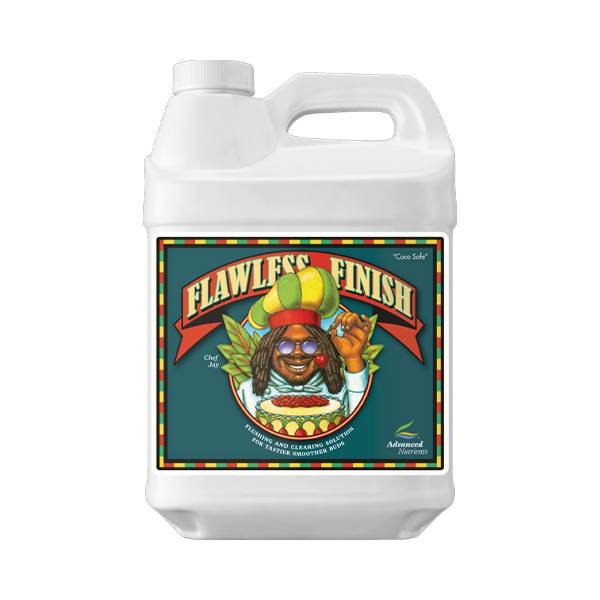
8. Organic or mineral fertilizers for outdoor growing
These two types of nutrients are very effective, but for soil cultivation we generally recommend using a range of organic fertilizers, which guarantee a better taste quality, thanks to the composition rich in sugars, organic acids, humic acids and other natural ingredients.
Organic nutrients come from the living world (plant or animal), while mineral nutrients are the result of the chemical industry, or the exploitation of phosphate or potassium veins.
Organic or mineral nutrient?
The main difference in the use between organic (bio) nutrients and mineral (chemical) nutrients is that the organic nutrients must first be broken down by the microbial life of the soil into minerals that can be assimilated by the plant, while the mineral nutrients are composed of salts that can be directly assimilated by the plant, without going through the microbial path.
There are also biomineral nutrients, which contain an organic part and a mineral part. In this case it is more of a commercial reason than a real innovation.
Mineral nutrients are assimilated faster than organic nutrients which diffuse more slowly. As far as their performance is concerned, when both are used well, these two types of fertilizers can offer excellent results.
To get the most out of composting, organic nutrients can be accompanied by beneficial microbial life. This will greatly increase the assimilation of nutrients from the roots, protecting them from attacks by pathogenic bacteria and fungi.
9. How to store fertilizers
Organic products should preferably be stored in the refrigerator, once opened, so that they do not deteriorate and can be kept for a few months. When organic nutrients are added to irrigation water, it must be used immediately, as they cannot be kept in good condition for many hours.
Mineral products keep at room temperature for a few years, avoiding direct light. Once diluted in irrigation water, it can be kept for a few days. In any case (organic or mineral), if the smell or texture of a product is altered, it should not be used. These products can become toxic but they will certainly have lost their nutritional efficiency. Mineral nutrients can solidify inside the container in the form of crystals, if this is the case we will need to shake the bottle to try to dilute them.
In fact, it is important to always shake each product well before using it, so that the ingredients are evenly distributed. It is preferable to use a pipette or a graduated syringe for each bottle, so as not to denature the products.
If you want to know our proposals for fertilizers, stimulators and boosters that are having great success this season, read our next article on the Idroponica.it blog dedicated to the topic.